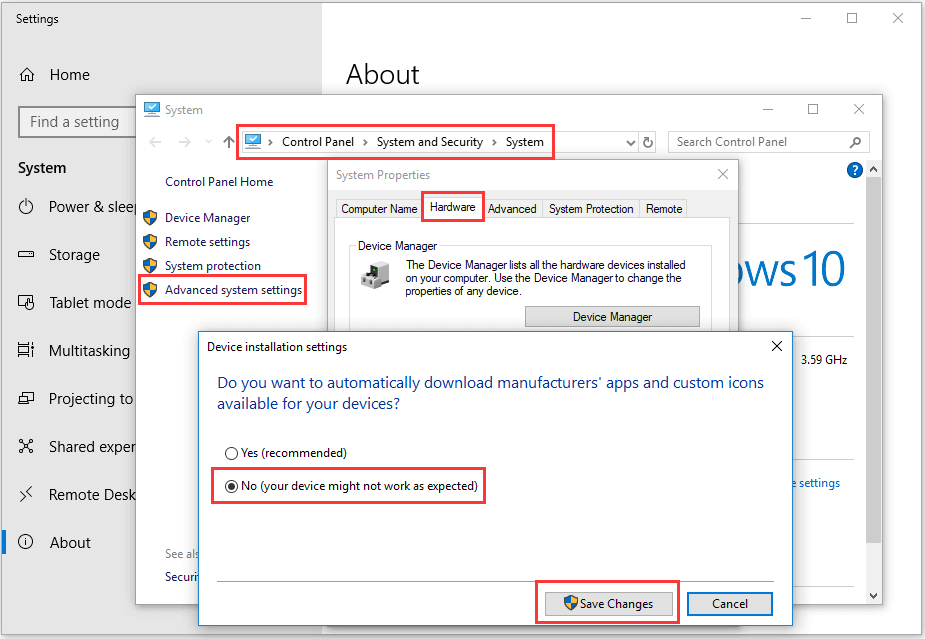Taking Control: A Comprehensive Guide on How to Disable Automatic Driver Downloads in Windows 10

Introduction:
Windows 10, Microsoft’s feature-rich operating system, is designed to provide seamless experiences by automatically managing various aspects of system functionality. One such aspect is the automatic downloading of device drivers, aimed at ensuring hardware compatibility and performance. While this feature is advantageous for many users, there are scenarios where individuals prefer to have more control over their driver updates. In this extensive guide, we will explore the intricacies of disabling automatic driver downloads in Windows 10, allowing users to manage their drivers manually and tailor their computing environment to specific preferences.
Understanding Automatic Driver Downloads in Windows 10:
Automatic driver downloads in Windows 10 are part of the Windows Update mechanism, ensuring that users have the latest device drivers installed for optimal hardware functionality. While this feature is generally beneficial, there are instances where users may want to disable it. Common reasons include concerns about driver compatibility, stability issues, or a preference for manually managing driver updates. Fortunately, Windows 10 provides the flexibility to control automatic driver downloads through advanced settings.
Step 1: Accessing Windows Update Settings:
To begin the process of disabling automatic driver downloads, access the Windows Update settings. Press the Windows key + I to open the Settings app. From the Settings menu, select “Update & Security,” and then click on “Windows Update” from the left sidebar. This will lead you to the Windows Update settings.
Step 2: Navigating to Advanced Options:
Within the Windows Update settings, locate and click on the “Advanced options” link. This link directs you to a new window where you can access additional settings related to Windows Update, including those for automatic driver downloads.
Step 3: Configuring Driver Update Settings:
In the Advanced options window, you will find a section titled “Driver updates.” By default, Windows 10 is set to automatically download and install drivers. To disable this feature, click the dropdown menu and select one of the following options:
- Yes (default): Automatically download and install drivers.
- No (your device might not work as expected): Notify you before downloading and installing drivers.
- Never install driver software from Windows Update: Prevents Windows Update from automatically downloading and installing driver updates.
Step 4: Choosing the Desired Option:
To disable automatic driver downloads entirely, select the option that reads “Never install driver software from Windows Update.” This ensures that Windows Update will no longer automatically download and install drivers for your devices.
Step 5: Confirming Changes:
After selecting the desired driver update option, click the “Back” arrow to return to the Windows Update settings page. This ensures that your changes are applied. Windows Update will no longer automatically download and install driver updates.
Step 6: Managing Driver Updates Manually:
With automatic driver downloads disabled, you are now responsible for managing driver updates manually. Keep track of your hardware devices and visit the manufacturers’ websites to download the latest drivers when needed. This approach allows for greater control over the driver update process.
Step 7: Utilizing Device Manager for Manual Updates:
Device Manager in Windows 10 provides a centralized location for managing and updating device drivers manually. To access Device Manager, right-click on the Start button and select “Device Manager” from the context menu. From here, you can right-click on a specific device, choose “Update driver,” and manually install the desired driver.
Step 8: Considering Third-Party Driver Updater Tools:
For users who prefer a more automated approach to managing drivers manually, various third-party tools are available. These tools scan your system, identify outdated drivers, and provide convenient options for updating them. However, exercise caution and ensure that you download such tools from reputable sources.
Step 9: Verifying Driver Update Status:
After making changes to the driver update settings, it’s advisable to periodically check the status of your device drivers. Ensure that your hardware devices have the latest drivers installed to benefit from performance improvements, bug fixes, and compatibility updates.
Conclusion:
Disabling automatic driver downloads in Windows 10 is a strategic decision that allows users to take control of their system’s driver update process. By following the comprehensive guide outlined above, users can navigate the Windows Update settings, configure driver update preferences, and manage their device drivers manually. Whether you have specific concerns about driver compatibility, stability, or simply prefer a more hands-on approach to system management, the ability to disable automatic driver downloads provides the flexibility needed to tailor your Windows 10 experience. Embrace the power of control over your device drivers and optimize your computing environment according to your unique preferences.




